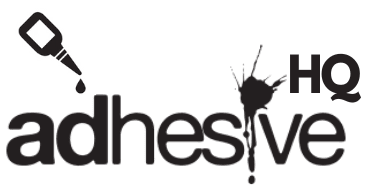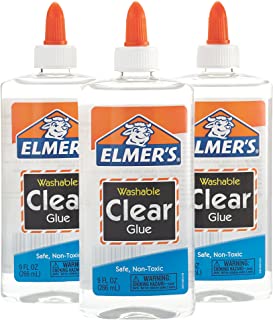Clear Glue vs White Glue
Unleash your imagination and take on any project with confidence. Whether you’re working on paper crafts, home décor, or making repairs, these glues are up for the challenge. Say goodbye to messy and unreliable adhesives, and say hello to crystal clear and strong white bonds that will last for years to come. guides
Clear glue (also called transparent glue) is a type of adhesive that dries transparent and is ideal for bonding clear or transparent materials such as glass, plastic, and resin. White glue (also called school glue or PVA glue) is a type of adhesive that dries white and is commonly used for crafting, school projects, and household repairs. Both clear and white glue can be easily cleaned up with water when wet and can be sanded or painted over when dry.
Clear glue is typically used in applications where the bond line needs to remain invisible, such as in jewelry making or picture frame assembly. It is also commonly used in resin casting and model making. White glue is often used in paper crafts, such as scrapbooking, as well as in woodworking and ceramics. It dries to a flexible, durable bond that is resistant to water, making it a popular choice for household repairs and other projects that will be exposed to moisture.
More on :- Comparison of White Glue vs Wood Glue
In addition, white glue is often used as a sealant, primer, or size for porous surfaces prior to painting or gilding. Both clear and white glue are available in different forms, such as liquid, gel, or spray, and can be found at most craft and hardware stores.
Clear Glue Review
Clear glue is a type of adhesive that is used for bonding clear or transparent materials and dries transparent. It is commonly used in resin casting, jewelry making, and model making. When choosing a clear glue, consider the following factors:
- Drying time: Some clear glues dry faster than others, so it’s important to consider the drying time if you need the bond to be formed quickly.
- Viscosity: The viscosity of clear glue affects the flow and spreading of the adhesive. A lower viscosity glue will be more fluid and spread more easily, while a higher viscosity glue will be thicker and have a more controlled flow.
- Strength: Consider the strength of the bond required for your project. Some clear glues are stronger than others and are better suited for heavy-duty applications.
- Chemical composition: Some clear glues contain chemicals that can be harmful to humans or the environment. Look for a product that is non-toxic or eco-friendly if you are concerned about safety.
- Packaging: Clear glue is available in different sizes and types of packaging, from small tubes to large bottles.
- Price: Clear glue can range in price from inexpensive to very expensive, depending on the brand and type.
- Availability: Clear glue is widely available at craft stores, hardware stores, and online retailers.
- Brand reputation: Consider the reputation of the brand when choosing a clear glue. Look for brands that are well-known and have a good reputation for quality and reliability.
Pros of Clear Glue:
- Transparency: Clear glue dries transparent, making it ideal for bonding clear or transparent materials and maintaining the appearance of the bond line.
- Versatility: Clear glue can be used in a variety of applications, including resin casting, jewelry making, and model making.
- Strength: Some clear glues are strong enough for heavy-duty applications, providing a durable bond.
- Wide availability: Clear glue is widely available at craft stores, hardware stores, and online retailers.
Cons of Clear Glue:
- Chemical composition: Some clear glues contain chemicals that can be harmful to humans or the environment.
- Drying time: Some clear glues have a longer drying time, which can be inconvenient for some applications.
- Viscosity: The viscosity of clear glue can affect the flow and spreading of the adhesive, making it difficult to control in some applications.
- Price: Clear glue can range in price from inexpensive to very expensive, depending on the brand and type.
White Glue Review
White glue, also known as PVA (polyvinyl acetate) glue, is a type of adhesive commonly used for arts and crafts, paper projects, and woodworking. It dries clear and is non-toxic, making it a popular choice for children’s projects. Some key features and benefits of white glue include:
- Versatility: Can be used on a variety of surfaces including paper, cardboard, wood, and fabric.
- Drying time: Takes anywhere from 5 to 15 minutes to dry depending on the thickness of the application.
- Strength: Once dry, the bond is strong but can be easily broken or sanded.
- Clean-up: Can be easily cleaned up with water while still wet, but can be difficult to remove once it has dried.
- Availability: Widely available at most arts and crafts stores, as well as online.
In conclusion, white glue is a reliable and versatile adhesive for a variety of projects. Its ease of use, quick drying time, and strong bond make it a popular choice for many individuals.
Additionally, white glue is a cost-effective solution for many projects and can be used in a wide range of applications, from school projects to home repairs. Its clear finish and non-toxic nature make it ideal for use in homes with children and pets. White glue is also water-resistant when dry, making it a good choice for outdoor projects as well.
Another advantage of white glue is that it is easy to control the amount of glue applied to a surface. The consistency of white glue makes it simple to spread evenly, reducing the risk of over-applying or making a mess. Furthermore, white glue can be easily thinned with water if necessary, making it even more versatile.
However, it’s worth noting that white glue may not be the best choice for certain applications. For example, it is not as strong as other types of adhesives such as super glue or epoxy, and may not hold up well under heavy stress or weight. Additionally, it can take some time to fully cure, which may not be ideal for projects requiring a quick turnaround time.
In conclusion, white glue is a versatile and reliable adhesive solution for a wide range of projects. Its clear finish, non-toxic nature, and ease of use make it a popular choice for individuals of all ages and skill levels. However, it may not be the best choice for heavy-duty applications, and it is important to consider its limitations when deciding which adhesive to use for a specific project.
Major Differences Between Clear Glue & White Glue
White glue and clear glue refer to two different types of adhesives that have distinct properties and uses. Some key differences between white and clear glue include:
- Drying time: White glue dries in 5-15 minutes, while clear glue dries in a minute or two.
- Appearance: White glue dries clear, while clear glue remains transparent even when dry.
- Strength: White glue has a strong bond, but not as strong as clear glue which is designed for heavy-duty applications.
- Flexibility: White glue dries flexible, while clear glue can be more rigid.
- Toxicity: White glue is non-toxic, while clear glue may contain toxic ingredients.
- Water-resistance: White glue is water-resistant, while clear glue may not be as durable in wet conditions.
- Visibility: White glue is less noticeable when dry, while clear glue may be more visible on certain surfaces.
- Sandability: White glue can be sanded once dry, while clear glue is not sandable.
- Price: White glue is often more affordable than clear glue.
- Versatility: White glue can be used on various surfaces and is a popular choice for many projects, while clear glue is better suited for specific applications.
Final Thoughts
In conclusion, clear glue and white glue both have their own unique features and uses. Clear glue is a quick-drying, heavy-duty adhesive that is well suited for demanding applications, such as metal, plastic, and glass. White glue, on the other hand, is a versatile, non-toxic option that is suitable for a wide range of projects, including arts and crafts, paper projects, and woodworking.
When choosing between clear and white glue, it is important to consider the specific requirements of the project, including drying time, strength, and water-resistance. Clear glue is best for applications where a fast-drying and strong bond is needed, while white glue is a good choice for projects that require a more flexible and less visible bond.
Regardless of the type of glue selected, it is always important to follow the manufacturer’s instructions and safety precautions to ensure the best results and protect against any potential hazards. By understanding the differences between clear and white glue, individuals can make an informed choice for their projects.

